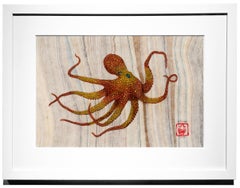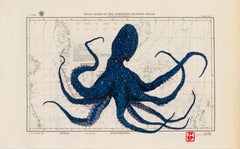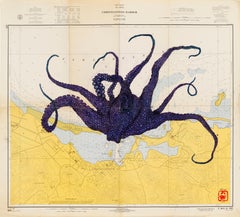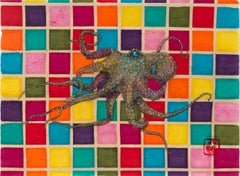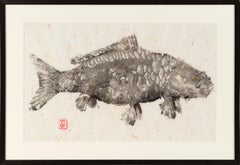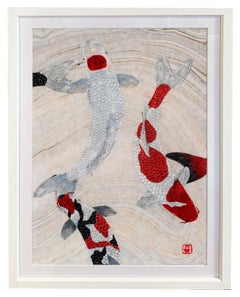Sumi Ink Animal Paintings
21st Century and Contemporary Contemporary Sumi Ink Animal Paintings
Sumi Ink, Watercolor, Mulberry Paper, Color Pencil
21st Century and Contemporary Contemporary Sumi Ink Animal Paintings
Sumi Ink, Watercolor, Mulberry Paper, Color Pencil
21st Century and Contemporary Contemporary Sumi Ink Animal Paintings
Sumi Ink, Watercolor, Color Pencil
21st Century and Contemporary Contemporary Sumi Ink Animal Paintings
Sumi Ink, Watercolor, Mulberry Paper, Color Pencil
21st Century and Contemporary Contemporary Sumi Ink Animal Paintings
Sumi Ink, Watercolor, Mulberry Paper
21st Century and Contemporary Contemporary Sumi Ink Animal Paintings
Sumi Ink, Watercolor, Mulberry Paper
21st Century and Contemporary Contemporary Sumi Ink Animal Paintings
Sumi Ink, Watercolor, Mulberry Paper
21st Century and Contemporary Contemporary Sumi Ink Animal Paintings
Sumi Ink, Watercolor, Mulberry Paper, Color Pencil
21st Century and Contemporary Contemporary Sumi Ink Animal Paintings
Watercolor, Mulberry Paper, Sumi Ink
21st Century and Contemporary Contemporary Sumi Ink Animal Paintings
Sumi Ink, Watercolor, Mulberry Paper, Color Pencil
21st Century and Contemporary Contemporary Sumi Ink Animal Paintings
Sumi Ink, Watercolor, Mulberry Paper
21st Century and Contemporary Contemporary Sumi Ink Animal Paintings
Watercolor, Sumi Ink, Mulberry Paper
2010s Contemporary Sumi Ink Animal Paintings
Sumi Ink, Rag Paper
21st Century and Contemporary Contemporary Sumi Ink Animal Paintings
Sumi Ink, Watercolor, Mulberry Paper, Color Pencil
21st Century and Contemporary Contemporary Sumi Ink Animal Paintings
Sumi Ink, Watercolor, Mulberry Paper, Color Pencil
21st Century and Contemporary Contemporary Sumi Ink Animal Paintings
Watercolor, Mulberry Paper, Sumi Ink
21st Century and Contemporary Contemporary Sumi Ink Animal Paintings
Sumi Ink, Watercolor, Mulberry Paper, Color Pencil
21st Century and Contemporary Contemporary Sumi Ink Animal Paintings
Sumi Ink, Watercolor, Mulberry Paper, Color Pencil
21st Century and Contemporary Contemporary Sumi Ink Animal Paintings
Sumi Ink, Watercolor, Mulberry Paper, Color Pencil
21st Century and Contemporary Contemporary Sumi Ink Animal Paintings
Sumi Ink, Watercolor, Mulberry Paper, Color Pencil
21st Century and Contemporary Contemporary Sumi Ink Animal Paintings
Paper, Sumi Ink, Color Pencil
21st Century and Contemporary Contemporary Sumi Ink Animal Paintings
Sumi Ink, Watercolor, Mulberry Paper, Color Pencil
21st Century and Contemporary Contemporary Sumi Ink Animal Paintings
Sumi Ink, Watercolor, Mulberry Paper, Color Pencil
21st Century and Contemporary Contemporary Sumi Ink Animal Paintings
Sumi Ink, Watercolor, Mulberry Paper, Color Pencil
21st Century and Contemporary Contemporary Sumi Ink Animal Paintings
Sumi Ink, Watercolor, Mulberry Paper, Color Pencil
21st Century and Contemporary Contemporary Sumi Ink Animal Paintings
Sumi Ink, Watercolor, Mulberry Paper, Color Pencil
21st Century and Contemporary Contemporary Sumi Ink Animal Paintings
Sumi Ink, Watercolor, Mulberry Paper
21st Century and Contemporary Contemporary Sumi Ink Animal Paintings
Sumi Ink, Watercolor, Archival Paper
Early 2000s Contemporary Sumi Ink Animal Paintings
Watercolor, Sumi Ink
21st Century and Contemporary Contemporary Sumi Ink Animal Paintings
Sumi Ink, Watercolor, Mulberry Paper, Color Pencil
21st Century and Contemporary Contemporary Sumi Ink Animal Paintings
Sumi Ink, Watercolor, Mulberry Paper, Color Pencil
Mid-20th Century Sumi Ink Animal Paintings
Plywood, Watercolor, Sumi Ink, Silk
21st Century and Contemporary Contemporary Sumi Ink Animal Paintings
Sumi Ink, Watercolor, Color Pencil
2010s Contemporary Sumi Ink Animal Paintings
Sumi Ink, Rag Paper
21st Century and Contemporary Contemporary Sumi Ink Animal Paintings
Sumi Ink, Watercolor, Mulberry Paper, Color Pencil
21st Century and Contemporary Contemporary Sumi Ink Animal Paintings
Sumi Ink, Watercolor, Mulberry Paper, Color Pencil
21st Century and Contemporary Contemporary Sumi Ink Animal Paintings
Sumi Ink, Watercolor, Mulberry Paper, Color Pencil
21st Century and Contemporary Contemporary Sumi Ink Animal Paintings
Sumi Ink, Watercolor, Mulberry Paper, Color Pencil
21st Century and Contemporary Contemporary Sumi Ink Animal Paintings
Sumi Ink, Watercolor, Mulberry Paper, Color Pencil
21st Century and Contemporary Contemporary Sumi Ink Animal Paintings
Sumi Ink, Watercolor, Mulberry Paper, Color Pencil
21st Century and Contemporary Contemporary Sumi Ink Animal Paintings
Sumi Ink, Watercolor, Mulberry Paper, Color Pencil
21st Century and Contemporary Contemporary Sumi Ink Animal Paintings
Sumi Ink, Watercolor, Mulberry Paper, Color Pencil
21st Century and Contemporary Contemporary Sumi Ink Animal Paintings
Sumi Ink, Watercolor, Mulberry Paper, Color Pencil
21st Century and Contemporary Contemporary Sumi Ink Animal Paintings
Sumi Ink, Watercolor, Mulberry Paper, Color Pencil
21st Century and Contemporary Contemporary Sumi Ink Animal Paintings
Watercolor, Sumi Ink, Mulberry Paper
21st Century and Contemporary Contemporary Sumi Ink Animal Paintings
Sumi Ink, Watercolor, Mulberry Paper, Color Pencil
21st Century and Contemporary Contemporary Sumi Ink Animal Paintings
Sumi Ink, Watercolor, Mulberry Paper, Color Pencil
21st Century and Contemporary Contemporary Sumi Ink Animal Paintings
Sumi Ink, Watercolor, Mulberry Paper, Color Pencil
21st Century and Contemporary Contemporary Sumi Ink Animal Paintings
Sumi Ink, Watercolor, Mulberry Paper, Color Pencil
21st Century and Contemporary Contemporary Sumi Ink Animal Paintings
Sumi Ink, Watercolor, Mulberry Paper, Color Pencil
21st Century and Contemporary Contemporary Sumi Ink Animal Paintings
Sumi Ink, Watercolor, Mulberry Paper, Color Pencil
21st Century and Contemporary Contemporary Sumi Ink Animal Paintings
Sumi Ink, Watercolor, Mulberry Paper, Color Pencil
21st Century and Contemporary Contemporary Sumi Ink Animal Paintings
Sumi Ink, Watercolor, Mulberry Paper, Color Pencil
21st Century and Contemporary Contemporary Sumi Ink Animal Paintings
Sumi Ink, Watercolor, Mulberry Paper, Color Pencil
21st Century and Contemporary Contemporary Sumi Ink Animal Paintings
Sumi Ink, Watercolor, Mulberry Paper, Color Pencil
21st Century and Contemporary Contemporary Sumi Ink Animal Paintings
Sumi Ink, Watercolor, Mulberry Paper, Color Pencil
21st Century and Contemporary Contemporary Sumi Ink Animal Paintings
Sumi Ink, Watercolor, Mulberry Paper, Color Pencil
21st Century and Contemporary Contemporary Sumi Ink Animal Paintings
Sumi Ink, Watercolor, Mulberry Paper, Color Pencil
